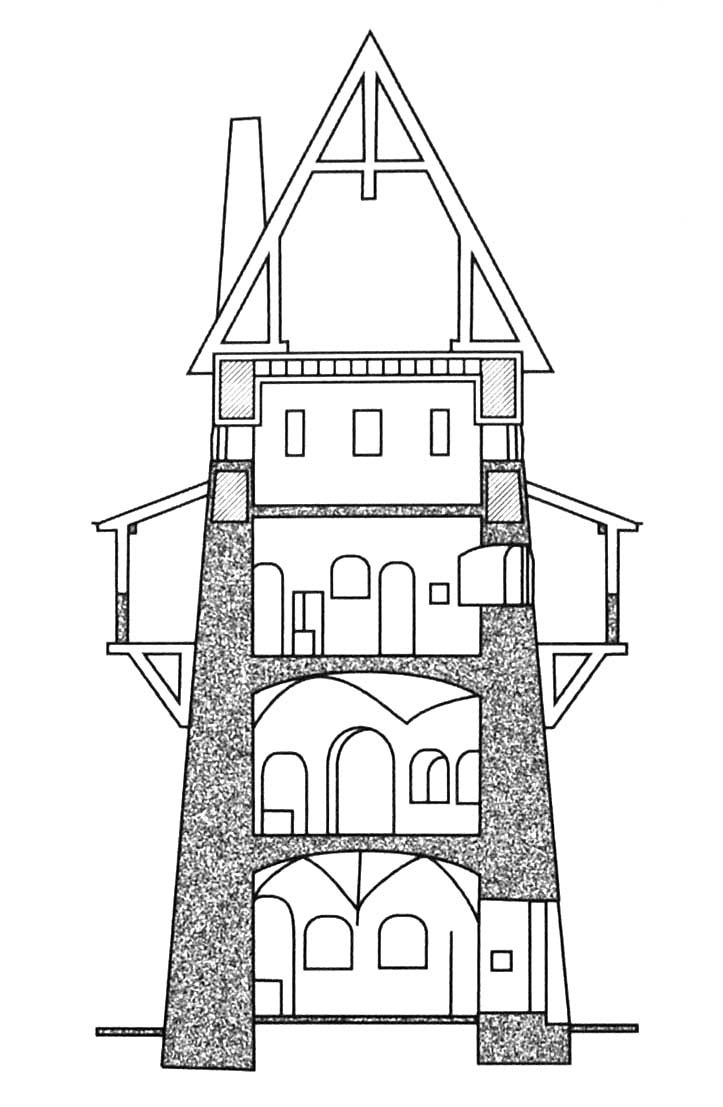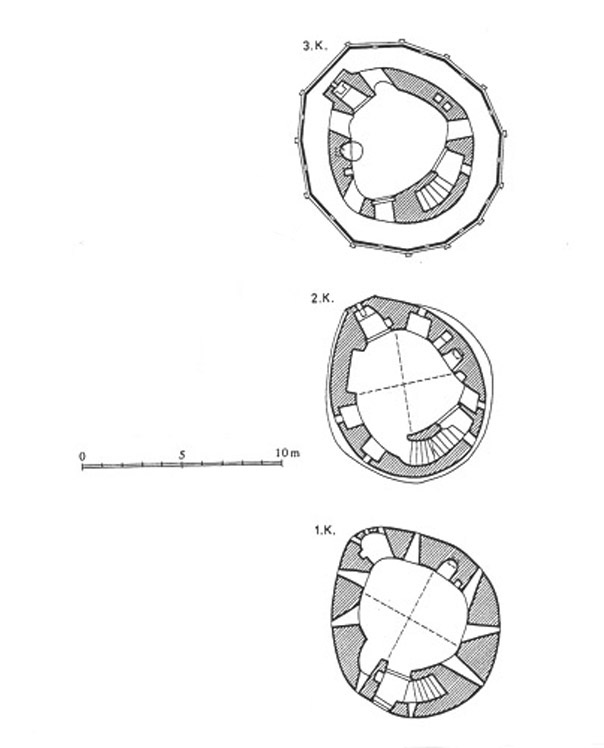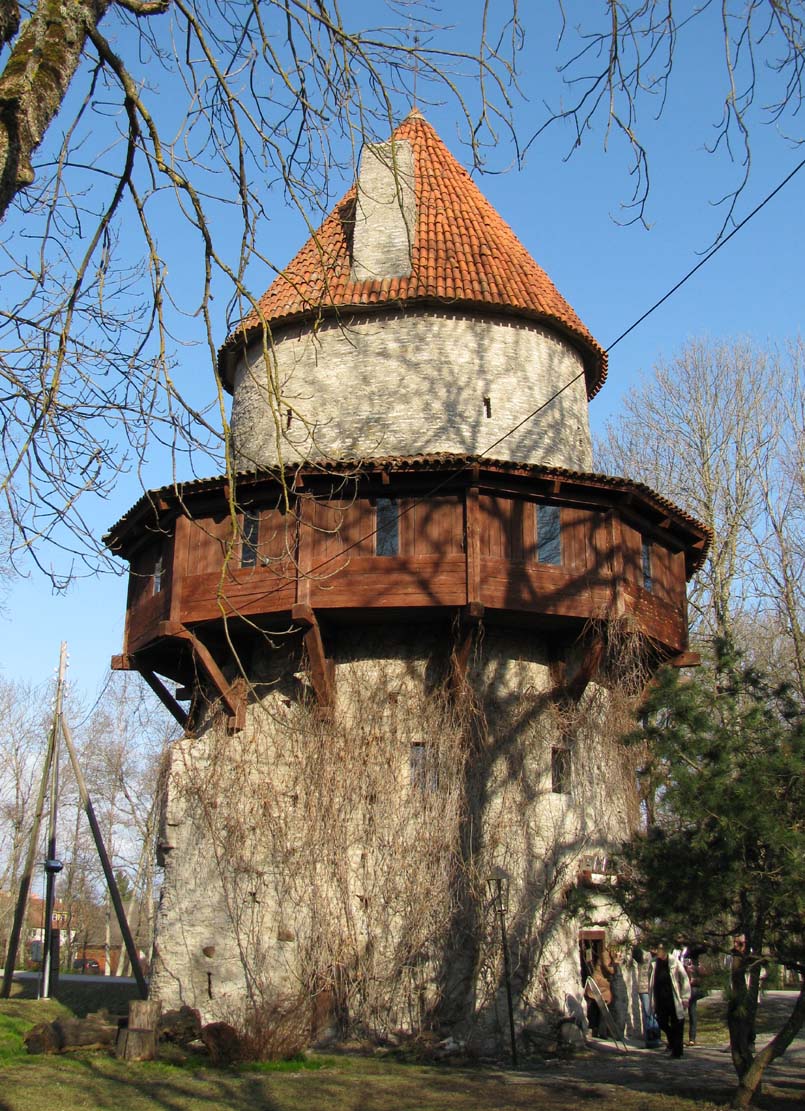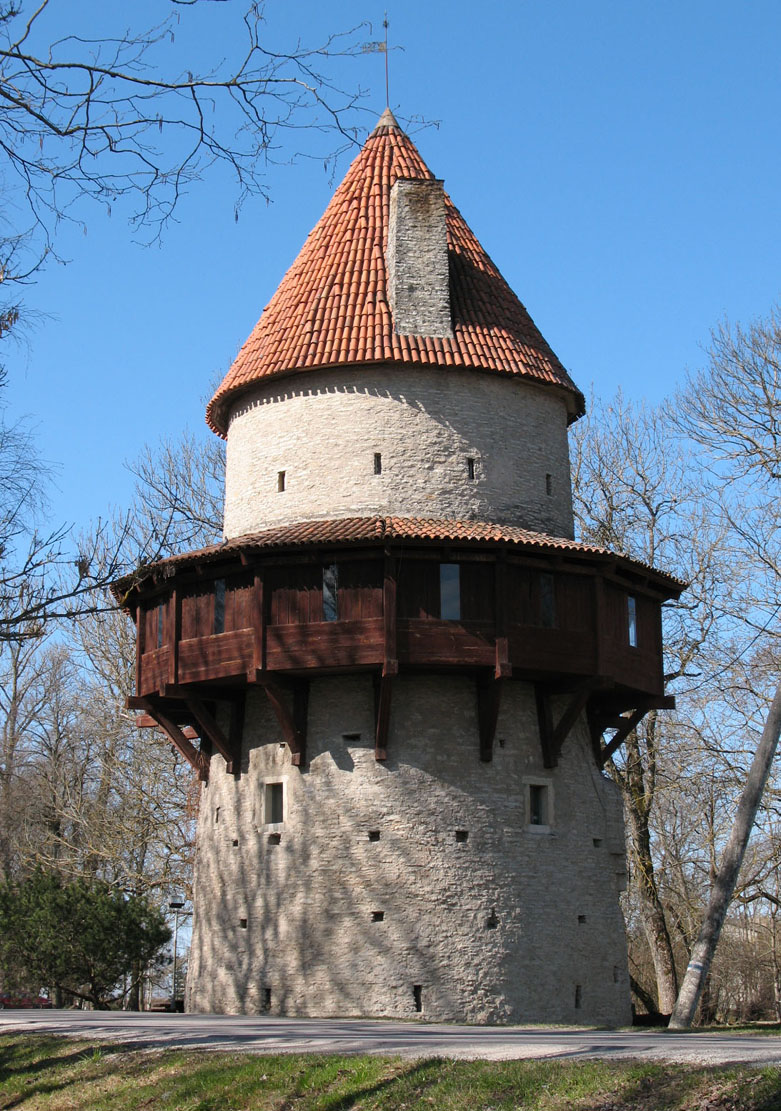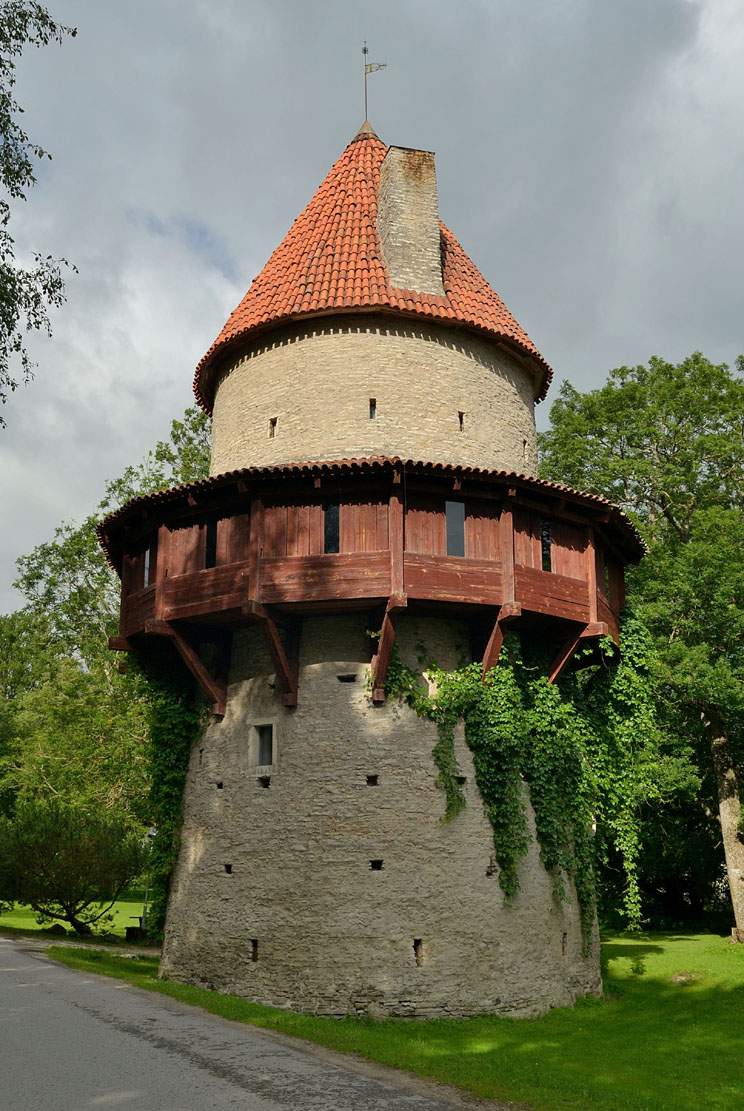History
The owners of the residential and defense towers in Livonia were secular knightly families remaining in a vassal relation to the local feudal lord: the bishop or the Teutonic Order. The owners of Kyda were the Tiesenhausen family, one of the most powerful families scattered throughout Estonia. The first mentions of the estate come from the second half of the 14th century and perhaps then some wooden fortifications were already created. The stone tower comes from the first quarter of the 16th century. In the sixteenth century, during the invasion of Ivan the Terrible troops, it was damaged and probably abandoned. In the form of a ruin, it survived successfully until the 20th century, when it was repaired.
Architecture
The tower was built on an irregular oval plan, tapering towards the top with increasingly thinner walls. It received four storeys, the two lowest of which were covered with a vault, and the upper two with a flat timber ceiling. Contrary to medieval customs, the ground floor was probably a representative room and not a utility chamber, while the first floor was a residential level. The remaining two floors had defensive functions, the lower of them was equipped with a now reconstructed wooden defensive porch. Due to the lack of a basement, they could also be used as handy warehouses. The floors were accessible by a slightly curving staircase embedded in the thickness of the wall. Most of the windows were only small slits, only the first floor was illuminated by slightly larger four-sided openings. The layout of wooden auxiliary buildings in the vicinity of the tower and hypothetical additional external fortifications is unknown.
Current state
Today, the tower in Kiiu is one of two (next to Vao) fully preserved defense tower houses in Estonia. Along with the reconstruction of the wooden porch, it was restored to its original, late medieval appearance. Currently, there is a restaurant inside.
bibliography:
Borowski T, Miasta, zamki i klasztory, Inflanty, Warszawa 2010.
Tuulse A., Die Burgen in Estland und Lettland, Dorpat 1942.

